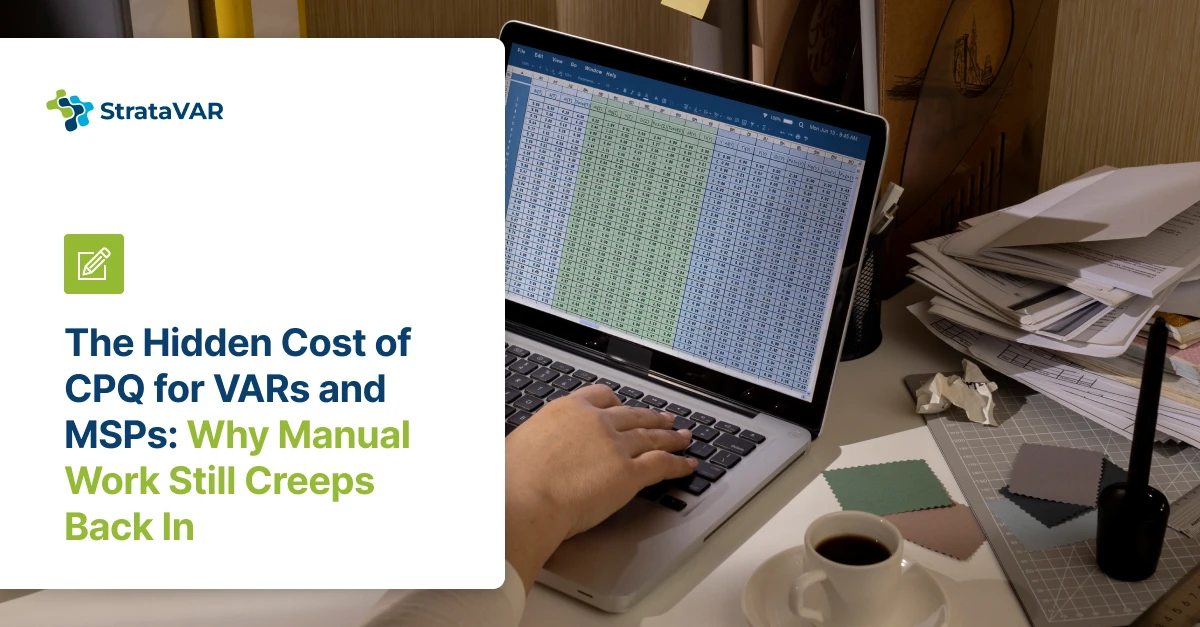Transitioning from a VAR to an MSP: A 5-Step Guide for ICT VARs

This is a div block with a Webflow interaction that will be triggered when the heading is in the view.
This is a div block with a Webflow interaction that will be triggered when the heading is in the view.
In recent years, ICT Value-Added Resellers (VARs) have increasingly moved from project-based work to offering managed services. And for good reason. In 2019, Gartner predicted that about 40% of Value-Added Resellers could go out of business if they did not adopt a managed services model.
More recent research from 2023 highlights the potential of this shift. Researchers forecasted a 12.7% revenue increase in the IT-managed services sector. When MSPs sign a contract for a customer’s hardware and software, they start a long-term partnership. This significantly enhances customer loyalty and retention, making the model truly attractive.
This transition from VAR to MSP is clearly a strategic necessity in the changing market, promising recurring revenue, strengthening customer relationships, and enhancing scalability. But what exactly does this transition from a VAR to an ICT MSP entail, and how can ICT VARs manage it successfully? In this blog, StrataVAR offers a comprehensive 5-step guide to help VAR businesses successfully transition to a managed services model.
VAR vs MSP: What is the Difference between VAR and MSP?
Managed services in the ICT context signify a move from CAPEX to OPEX financial models. It favors operational expenses over capital expenditures. In managed services, the ICT VAR owns the hardware and software solutions.
They offer these services to the end-user through models such as Hardware as a Service (HaaS), Infrastructure as a Service (IaaS), and Platform as a Service (PaaS). Therefore, managed services lead to hardware and software sales for VARs.
Unlike the project-based model, which generates revenue from one-off projects, managed services offer a steady income through ongoing contracts. For a reseller offering managed IT VAR services, this creates steady cash flow. Additionally, it helps establish stronger customer relationships by resolving issues promptly. Thus, reinforcing the IT managed services value proposition.
Now that we understand MSPs and VARs, let's discuss how to transition from the VAR business model to the MSP reseller business model.
The 5-Step Roadmap to a Successful Transition from VAR to MSP
While switching from a VAR to an MSP may pose challenges. Hence, the following steps can be useful for VARS when adding managed services to their business profile.
1. Crafting a Strategic Blueprint When a VAR adds Managed Services
Transitioning to managed services IT from a value-added reseller (VAR) necessitates detailed strategic planning. VARs should start by conducting a market analysis to identify which services are in demand and what their competitors are offering. A good example of VARs expanding into managed services is when there is a high demand for cloud integration services in their region. They should consider adding this to their service portfolio.
Defining target markets is also crucial. A VAR specializing in healthcare IT might focus on managed services for medical practices and health clinics. The unique value proposition (UVP) is key. It differentiates the VAR from competitors.
For instance, a UVP could be providing 24/7 cybersecurity monitoring with real-time threat response. This could be appealing to businesses concerned about data breaches.
2. Navigating Financial Transformation for the Switch From VAR to MSP
Financially, the transition from a project-based model to managed services involves significant changes. Companies benefit from not paying upfront for hardware and software, instead paying a recurring fee. While providing managed services increases VAR sales, VARs must adapt to a steady but potentially slower cash flow stream. Instead of receiving a large payment upon completing a sale, they’ll earn monthly subscription fees.
They may need to reevaluate their pricing models to ensure they’re competitive yet profitable. This might include bundle services and offering tiered pricing levels. It may also include implementing value-based pricing strategies to guarantee effective MSP pricing models. Additionally, setting up efficient billing systems, such as subscription management software, is crucial for handling recurring payments and managing customer accounts cost-effectively.
3. Implementing Operational Changes
Operationally, the shift to managed services means investing in new tools and technologies. Remote Monitoring and Management (RMM) software, for example, enables VARs to remotely oversee and control clients’ IT systems. It involves identifying and resolving issues before they escalate. Professional Services Automation (PSA) solutions help manage project tasks, billing, and client communications in one platform.
Service level Agreements (SLAs) for uptime and performance are critical elements of these services. An example here could be a VAR implementing RMM and PSA solutions to streamline service delivery and meet SLAs. Ultimately, this improves customer satisfaction.
4. Fostering Cultural Shifts within the Organization When Managed IT Services are added to the Reseller (VAR) Business
The transition from a VAR to an MSP also demands a cultural shift within the organization towards a customer-centric and service-oriented approach. This shift might involve retraining staff to focus on long-term customer relationships rather than short-term project completions.
For instance, sales teams must learn to sell services based on their ongoing value rather than one-time project benefits. Developing a continuous learning environment can help employees stay updated on the latest technologies and service management practices. This ensures they are equipped to deliver high-quality managed services.
5. Overcoming Transition Challenges
VARs face several challenges when transitioning to managed services. Internal resistance to change can be mitigated through effective communication and involving employees in the transition process. It helps them understand the benefits and how it will affect their roles.
Educating customers about the benefits of managed services, including cost savings, enhanced security, and proactive technical support. This can help retain existing clients and attract new ones. Maintaining service quality is crucial for building trust and credibility.
Regular training, quality assurance processes, and customer feedback mechanisms can help VARs uphold high service standards. Implementing a customer relationship management (CRM) system can enhance client communication and service tracking, ensuring consistent and efficient service delivery.
Navigating the Transition from VAR to MSP with StrataVAR
The managed services model helps VARs grow and stay competitive by focusing on OPEX instead of CAPEX, keeping important cash reserves. By learning how managed services work, planning carefully, and effectively handling challenges, VARs can capitalize on this opportunity and achieve long-term success.
Embracing the managed services model is not just a strategic business decision but a commitment to evolving with the industry’s demands and providing unparalleled value to customers. For more information on how StrataVAR can help your VAR business navigate the transition, contact StrataVAR.
FAQs
1. What tools help systems integrators transition to ICT managed services?
Systems integrators can utilize RMM, PSA, and subscription billing software to manage client IT systems and track tasks. Plus, it can automate invoicing processes. These tools make it easier to deliver reliable VAR IT support services and proactively monitor performance.
2. Can VARs offer IT VAR solutions for enterprises?
Yes. VARs can provide IT VAR solutions for enterprises by combining hardware, software, and managed ICT services. This approach creates a scalable, all-in-one technology solution that supports business growth and ensures continuous IT performance.
3. How do VAR partnerships enhance services?
VAR partnerships with cloud or software vendors allow resellers to offer a wider range of services and solutions. These partnerships give access to advanced technologies, specialized tools, and expertise that the VAR may not have in-house. As a result, VARs can offer more comprehensive IT support services and cater to diverse customer needs. Plus, they can respond more quickly to technical challenges.

.webp)

